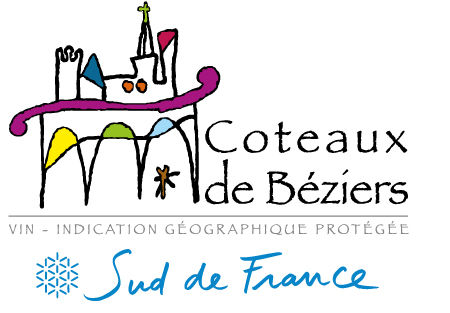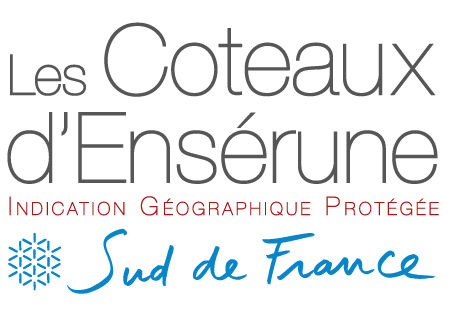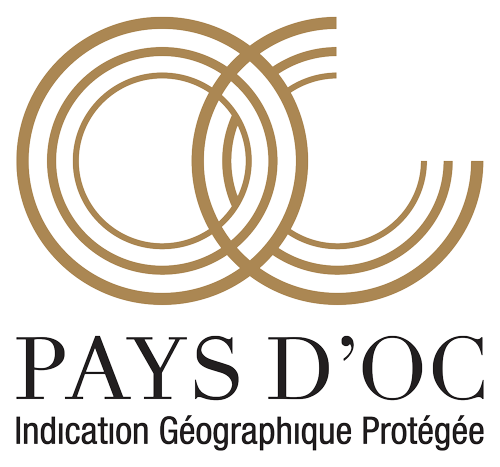48 wineries and 6 cooperative wineries make wine under 5 designations in the area approved by Vignobles & Découvertes since 2015. Just like our favourite characters from our childhood, each one has its own personality…
IGP (*) Côtes de Thongue
The Thongue is a tributary of the Hérault that appears on the Cévennes foothills. Over time it has sculpted hillsides where the vines reap the best of the land and Mediterranean climate. The Côtes de Thongue union (founded in 1974) covers 1500ha, 5 towns and villages in Béziers Méditerranée, 3 cooperative wineries and 8 wineries.
Cooperative wineries : les Vignerons d’Alignan (Alignan-du-Vent), les Vignerons de l’Occitane (Servian), les Vignerons de Montblanc (Montblanc).
Wineries : Bourdic, Brescou, AB Tourette, Caton, Bouchard-Deshenrys (Alignan-du-Vent) ; Pouzac (Servian) ; Montmarin, des Amiel (Montblanc).

IGP Coteaux de Béziers
The vineyard lies between the Libron and Orb, two coastal rivers that run into the Mediterranean (the first in Vias, the second in Valras-Plage), with Béziers in the middle. This strip of land packs in a whole host of different terroirs, flavours and climates. The designation covers 17 towns and villages, 9 of which are in Béziers Méditerranée. There are 22 wineries and 4 cooperative wineries.
Cooperative wineries: Alma Cersius (Cers, Villeneuve-lès-Béziers, Portiragnes) ; Terroir en garrigues (Corneilhan) ; Les Vignerons de Lieuran (Lieuran-lès-Béziers) ; Les Vignerons de Sérignan (Sérignan)
Wineries: Bachellery, La Barthe, l’Hort del Gal, Mi-Côte, St Pierre des Bois, St Vincent de Paul, La Guinette, La Colombette, St Géniès (Béziers) ; Font-Neuve (Bassan) ; Augé, La Jeanne, Ste Thérésine, Haute Condamine (Boujan-sur-Libron) ; Emile & Rose, Valjulius (Corneilhan) ; Pierre Belle, Eric Etienne, Grand Bosc, La Roseraie (Lieuran-lès-Béziers).

IGP Coteaux d’Ensérune
It’s named after the hilltop oppidum overlooking the Montady drained lagoon. The IGP vineyard covers 11 towns and villages and 3650ha. This is where vinegrowers founded the first cooperative winery in the South of France, in Maraussan in 1901. Les Vignerons du Pays d’Ensérune is now the biggest cooperative winery in France.
Cooperative wineries: Nissan, Cazouls-lès-Béziers et Maraussan.
Wineries : La Barthe ; La Colombette ; l’Hort del Gal ; Mi-Côte ; Château de Raissac (Béziers); Perdiguier (Maraussan).

IGP PAYS D’OC
The collective brand was founded in 2000 to cover 4 départements in the former Languedoc/Roussillon (Aude, Hérault, Gard, Pyrénées-Orientales).
Vins de Pays d’Oc was renamed IGP wine in 2009 and has brought the regional vineyard to the international market. Most of the wine is made from six star varieties: Merlot, Syrah and Cabernet-Sauvignon for red and Sauvignon, Chardonnay and Viognier for white. IGP Pays d’Oc is now the leading French export wine, ahead of Bordeaux.
Cooperative wineries : cave des Vignerons du Pays d’Ensérune (Nissan-lez-Ensérune)
Wineries : Castan (Cazouls-lès-Béziers)

(*)
Protected Geographical Indication (PGI), formerly “Vins de Pays”:
The Vins de Pays classification first appeared in the late 60s to recognise non-AOC production (Designation of Controlled Origin) before becoming IGP wine in 2009 (Protected Geographical Indication). This wine comes exclusively from geographical areas with similar geological, soil and climate features; strict conditions and specifications apply to making the wine which is inspected throughout the process i.e. maximum yield, minimum alcohol content, grape varieties etc.
AOP (Protected Designation of Origin) :
This applies to a product made using renowned expertise in a single geographical area which gives the product its signature features. It’s a European label protecting the product name throughout the European Union. The rules for making an AOP wine are drawn up in specifications (even stricter than IGP wine) and inspected by an independent body approved by the INAO (French Institute for Designations of Origin).
AOC (Controlled Designation of Origin) : applies to products that meet AOP criteria and protects the name in France. It is a step towards the AOP which is now Europe-wide.
(definitions : INAO)




















